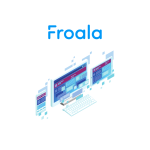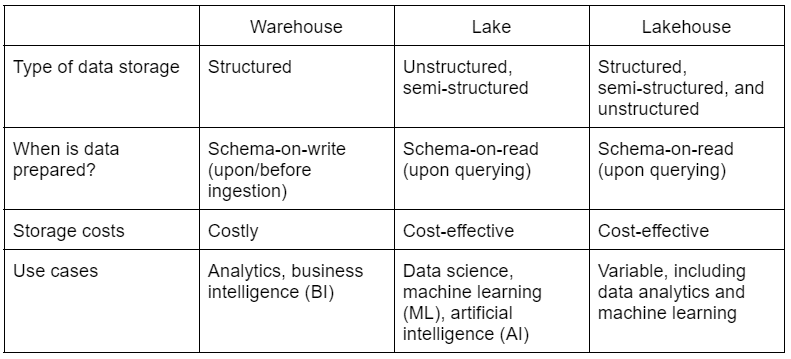Dynatrace’s new intelligent data lakehouse uses Froala
- Posted on
- By Aaron Dumon
- In General,

Nowadays, it’s getting more common to see an exponential increase in the amount of data collected inside a business. The same goes for the complexity of data. This challenge stems from multiple factors, such as a rapidly growing user base and plenty of additional data requirements. As a result, businesses usually have to sacrifice speed and storage costs just to analyze big data. Therefore, in recent years, there has been a need to find more intelligent ways of storing and analyzing data. And this is one more business problem that Dynatrace knew they had to solve.
In this article, you’ll get to know Grail, Dynatrace’s intelligent solution to this big data problem. Additionally, you’ll learn about the WYSIWYG editor (what you see is what you get) that’s integrated into Grail. Before we get to those topics, though, let’s first learn more about Dynatrace.
About Dynatrace
Dynatrace is a global software intelligence platform that leverages advanced AIOps and security to simplify and automate cloud operations. In simpler terms, they help businesses solve their cloud requirements easily. Their goal is to “make sure every digital experience and interaction, in every industry, everywhere, is flawless and secure.” They empower their customers to innovate faster, albeit safer, work more efficiently, and have better results. Dynatrace has solutions for cloud operations, analytics, DevOps, and more, which they use to help businesses across different industries. They also currently have about 50 offices and thousands of employees around the world.
And in their quest to make organizations adapt and succeed in the age of modern cloud computing, they decided to tackle the problem of big data. In one of their discussions, they realized that the current observability and monitoring solutions were very limited. Whether it was storage-related, query-related, or analysis-related, these limitations of those solutions prevented them from facing the aforementioned challenges. Dynatrace then thought about building a platform that makes all data easily, intelligently, and cheaply accessible. That’s when Grail was first conceptualized.
Grail is a data lakehouse for observability data, log management and analytics, and business analytics. Released in 2022, this new platform lets businesses overcome cloud challenges using its AI-powered analytics. To learn more about how Grail works, let’s first look at the definition of a data lakehouse.
What is a data lakehouse?
You might already know about databases, data warehouses, and data lakes. All of them are data storage types with their own use cases and benefits. For instance, databases are great for real-time data processing, warehouses for structured big data analytics, and lakes for flexible analytics. A data lakehouse is the latest technology that combines data warehouses and data lakes while keeping their benefits. This leads to better flexibility and data management. Here’s a table to help you see the differences between a data warehouse, data lake, and data lakehouse:
As seen on the table above, a data lakehouse has the benefits of both data warehouses and data lakes. So, how does it work? When data arrives in a data lakehouse, it is preserved in its original, raw form. In other words, unlike databases and data warehouses, it does not require a schema definition. This is the data lake part of the lakehouse. The unstructured data is then classified using a transactional metadata layer.
Unlike previous hybrid solutions that combined data warehouses and lakes, lakehouses provide only one platform for all data requirements. Thus, lakehouses prevent data redundancy or duplication. Apart from that, it’s cost-effective and very flexible. Lastly, its data warehouse part makes it easy to govern and manage data. Now that you’re more familiar with data lakehouses, let’s continue talking about Grail.
What is Grail?
I’ve already mentioned that Grail is Dynatrace’s new lakehouse technology for observability and analytics. So, let’s take a closer look at Grail’s features and capabilities.
- The only causational data lakehouse that supports MPP (massively parallel processing), increasing speed and cost-effectiveness
- Unifies data analysis, observability, and security
- Indexless (data lake part), i.e., there’s no need to structure data before ingestion
- Equipped with the new Dynatrace Query Language (DQL), which speeds up advanced analytics and has an easy-to-learn syntax
- Click here to learn more
To help carry out Grail’s mission, Dynatrace needed a WYSIWYG editor where their users could seamlessly input content. Their major concerns at the time were mostly about extensibility, integration, features, good documentation, and ease of use. So, which editor did they pick out of the numerous advanced ones on the market? Let’s continue to the next section to find out.
How did the Grail team find their WYSIWYG editor?
Alex Market of the Grail team said that he’s been in the software industry for many years. And even now, he always looks for tools, libraries, and techniques that boost productivity. He said that he has used Sencha products previously. And when the Grail team needed an editor, he recalled that Sencha has a sister brand for WYSIWYG editing, Froala.
They then checked Froala out and ultimately went with it because “it’s pretty well documented and overall is easy to use for the end users.” That’s not all, however. There are still some other things that the Grail team likes about Froala.
Here’s what the Grail team likes the most about Froala
The Grail team uses React for their front-end along with a styling framework of their own making. It was critical for them to find a WYSIWYG editor that could be easily integrated into their platform. Luckily, Froala is one of the easiest editors to integrate, with over 17 front-end frameworks currently supported. It can be used for any project, on almost any framework or technology stack, and on any platform. Because of this, the Grail team didn’t have to worry about compatibility issues. Froala is deeply developer-focused and extremely user-friendly, and these are two features that the Grail team loved about it. Here are a few of Froala’s 100+ features:
- Autosave
- Code view
- Customization
- Lightning-fast speed (less than 40 ms load time)
- Elegant, intuitive design
- Real-time editing and mentions
- Spelling and grammar checking
- Math and chemical equations support
- Save as PDF
- RTL support, 34+ languages
- Basic and advanced rich text formatting
- Support for images and other files
- Responsiveness
- Accessibility
- And a lot more (here’s the full list)
According to Alex Market, Froala’s integration with Grail is easy and straightforward while providing good customization options. Together, Froala and Grail help Dynatrace fulfill its mission of perfecting and improving digital experiences.
How easy is it to integrate Froala?
You can integrate Froala into your application in very little time. The best way is to visit this documentation page, choose your framework (if any), and choose your installation method. You can download the files directly from a form, install from NPM, use a CDN, or use other methods. After getting the files, you’ll only need to embed two lines of code, create your DOM element, and initialize Froala. And that’s it! Like Grail, you’ll have a robust, fast, elegant, and intuitive WYSIWYG editor for your app.
Summary
The uncontrollable growth and complexity of data today poses a difficult challenge for businesses. That’s why Dynatrace created Grail, its data lakehouse platform, which aims to simplify cloud operations and solve their problems. In this article, you learned about Dynatrace, Grail, data lakehouses, and a WYSIWYG editor that fits Grail’s needs.
Aaron Dumon
Aaron Dumona former writer for Froala, showcased exceptional talent and dedication during their tenure with the company.
-
Hide Show






No comment yet, add your voice below!